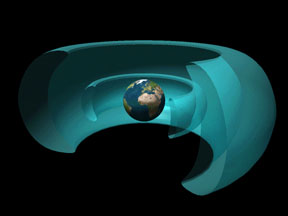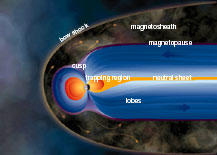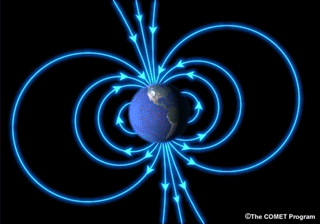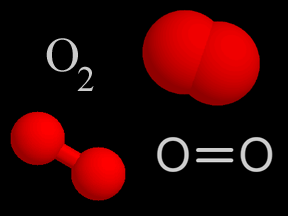The aurora in this photo has two colors of light, green and purple. Oxygen atoms give off the green light. The purple light comes from nitrogen molecules.
Click on image for full size
Image courtesy of Jan Curtis.
Colors of the Aurora
The aurora (Northern Lights and Southern Lights) are caused by collisions between energetic particles in Earth's magnetosphere and atoms or molecules in the upper atmosphere. Particles, mostly electrons and protons, are accelerated to high speeds and energies as they spiral along Earth's magnetic field lines. The particles bounce back and forth between Earth's magnetic poles, where magnetic field lines dip into the planet's upper atmosphere. Some of the energetic particles collide with atoms and molecules of oxygen and nitrogen in the upper atmosphere near the poles.
These collisions add energy to the atoms, which in turn shed the excess energy by emitting light. The brilliant displays of auroral lights have characteristic colors which depend on the type of atoms or molecules which are giving off the light. Oxygen atoms emit green light that is seen in many auroral displays. Oxygen atoms above 150 km (93 miles) in altitude can also give off red light. Energized nitrogen molecules emit red, blue, and violet light.
You might also be interested in:

One main type of radiation, particle radiation, is the result of subatomic particles hurtling at tremendous speeds. Protons, cosmic rays, and alpha and beta particles are some of the most common types
...more
The Earth has a magnetic field with north and south poles. The Earth's magnetic field reaches 36,000 miles into space. The magnetic field of the Earth is surrounded in a region called the magnetosphere.
...more
The thermosphere is a layer of Earth's atmosphere. The thermosphere is directly above the mesosphere and below the exosphere. It extends from about 90 km (56 miles) to between 500 and 1,000 km (311 to
...more
Protons and electrons can't move across magnetic field lines very easily. So sometimes these particles are are forced to spiral around them. Electrons cirle the field line in one direction, protons in
...more
Some particles do move along the field lines of the Earth. The crowded magnetic field lines near the poles cause particles to "reflect" and move back the same direction the from which they came. They bounce
...more
Earth has a magnetic field. If you imagine a gigantic bar magnet inside of Earth, you'll have a pretty good idea what Earth's magnetic field is shaped like. Of course, Earth DOESN'T have a giant bar magnet
...more
Oxygen (O2) is a kind of gas. A lot of the air you breathe is oxygen. That's a good thing, since we need oxygen to stay alive! About 4/5ths of the air in Earth's atmosphere is nitrogen (N2). Almost all
...more















